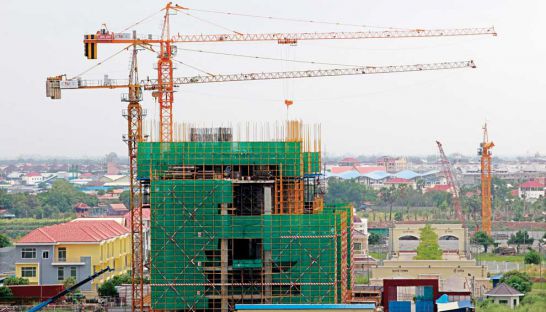Siem Reap to expand city while houses downtown remain undeveloped
Siem Reap to expand city while houses downtown remain undeveloped
In response to the rising population in Siem Reap city, the city’s geographical administration has expanded almost one-third of the city by adding three more districts nearby at the base of the city.
Siem Reap governor Su Platong told Post Property this week: “Currently, the Siem Reap authority is studying the city’s development by updating our master plan.”
He said the Apsara Authority had partnered with Japan’s International Cooperation Agency (JICA), and the German Development Service (DED) – representing the European Union – to conduct studies and create a masterplan since 2006, which was then concluded in 2010.
However, he added, “Things have changed and therefore, we will update the plan with the help of the Ministry of Land Management, Urban Planning and Construction, and the relevant departments, provincial authorities, and urbanisation team.”
Platong hoped that the decision to solidify the city’s master plan would not be a lengthy process since enough data had been collected and only a small number of points needed adjustment. However, no clear date has been stipulated.
He noted that the increase of people flowing into the city was mainly to find employment and business opportunities, especially for settlement in the last decade. “Currently, the population here is 250,000 compared to 120,000 a decade ago.”
He continued, “With the population increase comes the need for an increase of residential areas. Hence, in 2009, the Royal Government of Cambodia agreed to add three more districts into Siem Reap city increasing the total area of the city to 472.73 square kilometres.”
These newly added districts include Tek Vel, Krabey Real, and Pouk. However, back in 2009, these new districts had only been roughly mapped out without proper infrastructure.
“Before 2009, Siem Reap city only had 10 base districts. Now, we have 13 districts, and 108 villages,” said Platong. “In the meantime, the government had also created two ring roads, and many more proper streets in the city.”
The first ring road is 20 kilometres long, situated at the north of the city and Angkor, while the second ring road is also at the northern part of the city beginning from National Road 6 around the Chong Kaosu bus stop at Slokrom district.
Because of these two ring roads, Platong sees the positive growth of development in these areas compared to others. He claimed, “The eastern and northern parts of Siem Reap city are being developed by the local people. It seems like our city is expanding; however, we still need to abide by the plan from Apsara Authority that surrounds the Bakong temple area east of the city.”
Even though Siem Reap city has been noted by property experts as a developing area, most people living in Svay Dongkum district – which is approximately the centre of Siem Reap city – complained that developments seem to only happen in areas along bigger roads and streets, whereas many residential areas are still hard to access, and lack clean water and adequate sewage systems.
Veut Vy, 30, who rents a house around Siem Reap’s Build Bright University, about one kilometre from the iconic Pub Street, said, “Siem Reap city is developing to be a very beautiful place, although [development] only happen to places where there are many tourists passing. The housing areas for local people still lack many things. Some don’t even have good roads.”
Another resident, 40-year old Si Neath, said, “Our house is located in Sala Konseng village in Svay Dongkum, which is nearly at the city center. However, we don’t see any authority taking the initiative to develop roads, and sewage or clean water systems.”
She added, “For almost everyday in this rainy season, we have to travel through uneven roads, mud, and dirty water because there’s no sewage system to drain [the water] anywhere.”














